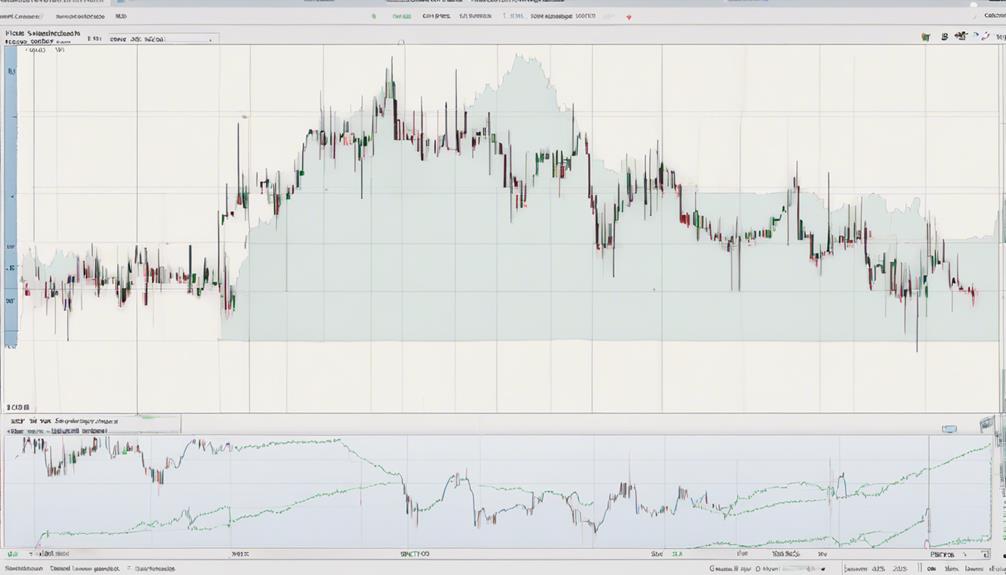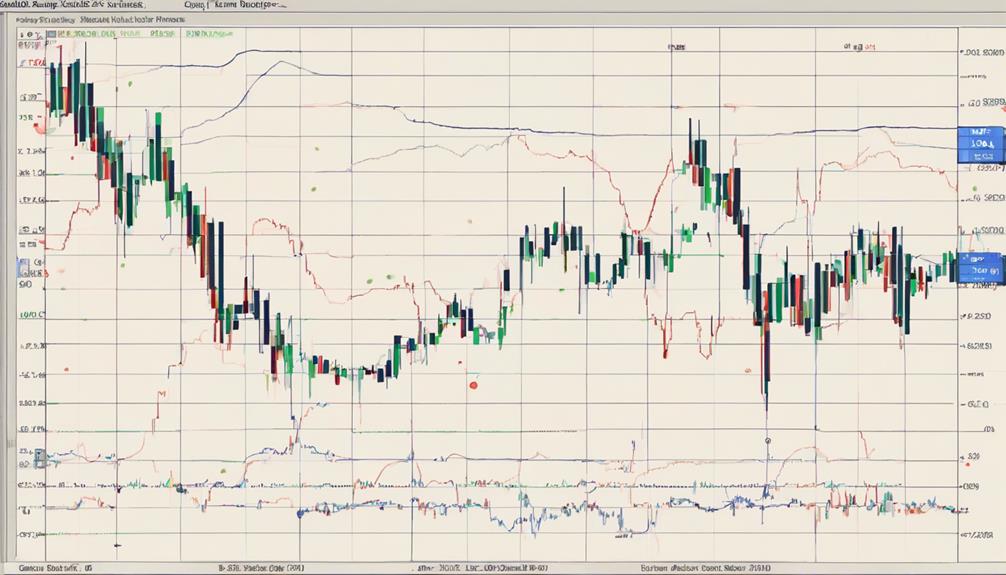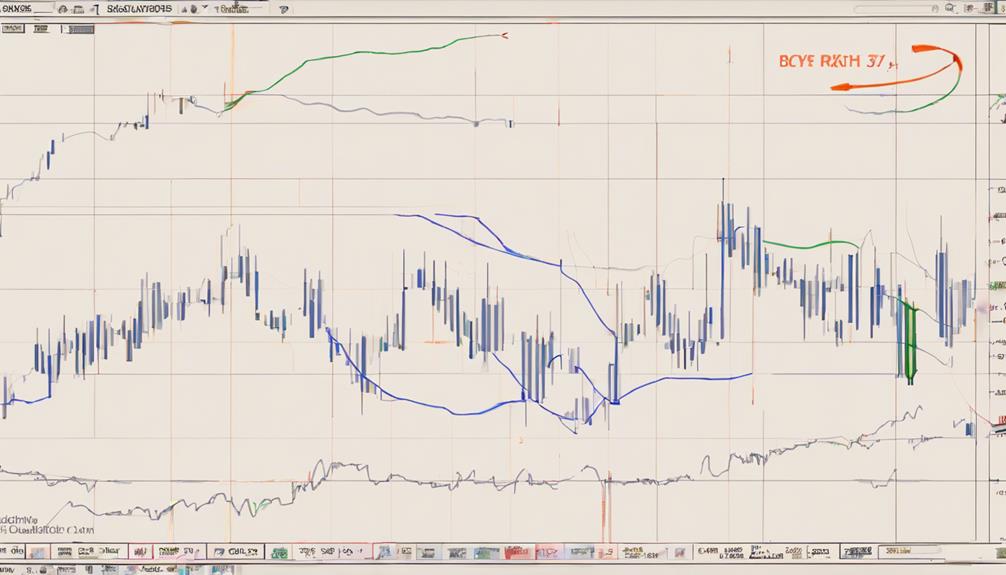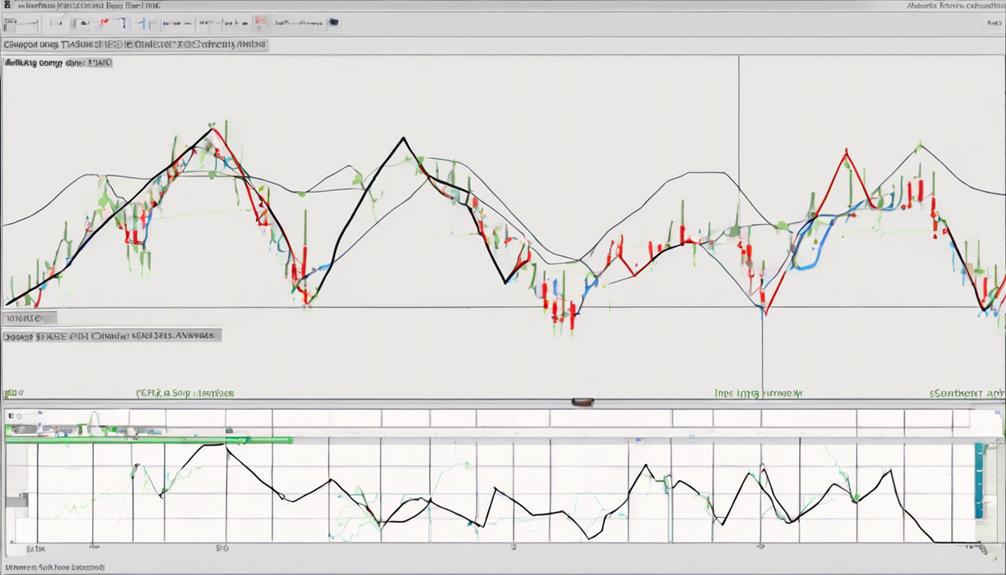Imagine exploring the world of trading indicators is like navigating through a dense forest with only a compass and a map. As you delve into the realm of Stochastic Oscillator and Moving Averages, you start to decipher the intricate dance between market momentum and trend movements.
But what happens when these two powerful tools intertwine, creating a web of signals that could potentially unlock the secrets of market behavior? The answer lies in understanding how these indicators work together seamlessly to guide your trading decisions with precision and confidence.
Stochastic Oscillator Overview
When assessing market momentum and potential reversals, the Stochastic Oscillator serves as a crucial tool due to its ability to compare a security's closing price against a specific time frame range.
This oscillator, a popular technical indicator in trading, helps identify overbought conditions when the indicator rises above 80 and oversold conditions when it falls below 20. Changes in the Stochastic Oscillator can signal shifts in momentum and potential trend reversals.
To provide a smoother interpretation, the oscillator commonly includes two lines: the actual value and a three-day moving average. Divergence between the Stochastic Oscillator and price movements can offer insights into possible upcoming market reversals, making it a valuable tool for traders looking to gauge market sentiment and potential turning points.
Understanding Stochastic Oscillator Formula

To comprehend the Stochastic Oscillator formula thoroughly, you must understand how %K is calculated as (Current Close – Lowest Low) / (Highest High – Lowest Low) * 100.
The Stochastic Oscillator indicator is widely used by traders in the market for technical analysis. %D, another key component, is derived from a 3-period Simple Moving Average of %K. This technical tool helps identify potential buy or sell signals.
Traders look for the %K line crossing above the %D line to signal a possible bullish trend, while a cross below %D might indicate a bearish trend. With values above 80 signaling overbought conditions and values below 20 suggesting oversold conditions, the Stochastic Oscillator formula provides valuable insights when combined with indicators like the Exponential Moving Average.
Interpreting Moving Averages

Moving averages play a crucial role in analyzing price trends by providing a smoothed representation over a specified period, guiding traders in making informed decisions based on dynamic support and resistance levels. Exponential moving averages react faster to price changes as they give more weight to recent prices, while simple moving averages equally weigh all prices within the chosen period for trend analysis.
These moving averages act as dynamic support and resistance levels, helping traders identify potential trend reversals. The crossing of short-term and long-term moving averages is a significant signal for such reversals. By using weighted moving averages, traders can give more importance to certain data points, thus refining their analysis of price trends and making more informed trading decisions.
Applying Stochastic Oscillator Strategies

Utilizing Stochastic Oscillator strategies involves identifying overbought and oversold conditions to pinpoint potential entry and exit signals for trading opportunities. When applying Stochastic Oscillator in your technical analysis, consider the following:
- Monitor overbought and oversold conditions with values above 80 or below 20.
- Utilize %K and %D line crossovers for generating buy or sell signals.
- Conduct divergence analysis to identify potential trend reversals like bullish or bearish divergence.
- Implement risk management strategies by setting stop-loss orders and defining take-profit levels to manage potential losses effectively.
Combining Stochastic Oscillator and Moving Averages

Incorporate Moving Averages with the Stochastic Oscillator to refine trend analysis and validate trading signals effectively. By combining these tools, traders can better determine trend direction and filter out false signals. The Golden Cross and Death Cross Moving Averages crossovers can be strengthened by signals from the Stochastic Oscillator.
Overlaying Moving Averages on Stochastic Oscillator charts enhances insight into market momentum and trend strength. The convergence of Moving Averages and Stochastic Oscillator signals provides a more accurate basis for trade entry and exit decisions.
This integration of Moving Averages with the Stochastic Oscillator optimizes the analysis process, offering a comprehensive approach to understanding market dynamics and making informed trading choices.
How Do Moving Averages Interact with Stochastic Oscillator in Trend Following?
When using stochastic oscillator and trend following steps, moving averages can act as support or resistance levels for the price trends. The interaction between moving averages and stochastic oscillator helps traders identify potential entry and exit points in a trending market, enhancing the effectiveness of trend-following strategies.
How are Moving Averages Used in Conjunction with the Stochastic Oscillator for Swing Trading?
Moving averages are commonly used in conjunction with the stochastic oscillator for swing trading. The stochastic oscillator helps identify overbought and oversold conditions, while the moving average can confirm trend direction. By combining these two indicators, traders can make more informed decisions when timing their trades for swing trading with the stochastic oscillator swing trading.
Frequently Asked Questions
How Do You Use Moving Average and Stochastic?
To use moving average and stochastic effectively, understand how moving averages smooth price trends and how stochastic identifies market extremes. Combining both tools can help you gauge trend direction, momentum, overbought/oversold levels, and generate potential buy/sell signals.
What Is 5 3 3 Stochastic Settings?
In 5 3 3 Stochastic Settings, a 5-period %K, 3-period %D, and 3-period smoothing are used, offering quicker signals. This configuration excels in short-term analysis, enabling traders to swiftly identify fast market movements for strategic decision-making.
Which Indicator Works Best With Stochastic Oscillator?
When using the Stochastic Oscillator, the Relative Strength Index (RSI) can be an effective indicator to complement its signals. It helps confirm overbought or oversold conditions, providing additional insight for your trading decisions.
What Is Stochastic 14 3 3?
Stochastic 14 3 3 comprises default settings for the Stochastic Oscillator, with 14 periods for %K, 3 periods for %D, and a smoothing factor of 3. These parameters help traders analyze price momentum effectively.
Conclusion
In conclusion, mastering the Stochastic Oscillator and Moving Averages can provide valuable insights into market momentum and trend direction.
By combining these tools effectively, traders can make informed decisions, manage risks, and maximize potential profits.
Remember, 'Don't put all your eggs in one basket' – diversification and thorough analysis are key to successful trading strategies.
Stay disciplined, stay vigilant, and keep refining your skills for consistent success in the dynamic world of trading.
